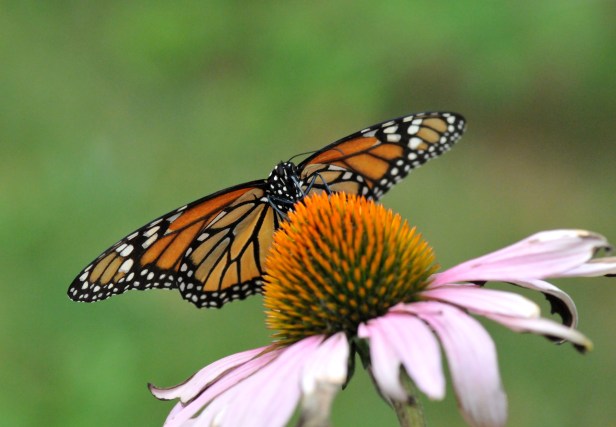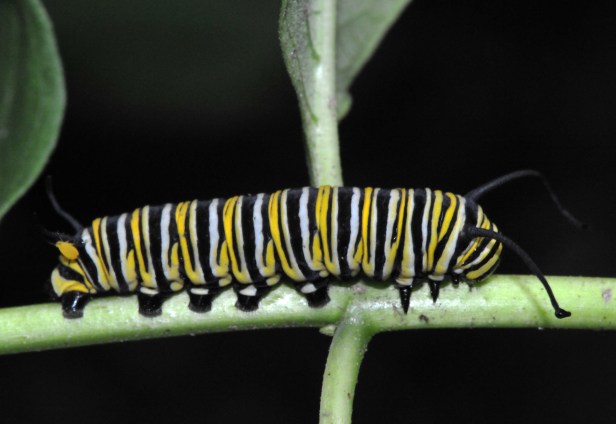Heading Toward Extinction?
An article in The New York Times yesterday entitled Monarch Migration Plunges To Lowest Level in Decades by Michael Wines leaves me saddened and disappointed. Though the article mentioned that it’s “due mostly to extreme weather and a change in farming practices in North America.” It doesn’t matter whether it is caused by the weather or farming practice, we can help slow the pace of extinction. With the extreme weather, we may not be able to do much as individuals aside from trying not to leave too large a daily carbon footprint. Maybe the planet will warm up a little bit more slowly. But do we really need to get rid of every single Milkweed in America’s conventional farming area? Do we need to genetically modify our vegetables to have resistance to herbicide so we can keep spraying chemical over the whole area to get rid of the weeds?
It takes the Monarch (Danaus plexippus) two generations for their trip from Mexico to the Northern US and Canada, and one generation to fly back. They need a place to lay their eggs and food for their caterpillars; that’s where the Milkweed (Asclepias syiaca) comes in. Monarch caterpillars feed mainly on Milkweed. Without it, there will not be much chance for the next generation. Please let some Milkweed grow in your garden so we can actually show future generations how beautiful the Monarch butterfly is and how great their annual migration is. Years from now, I hope that we will still be able to see actual Monarch butterflies in gardens and meadows, not just in old nature documentaries and where a narrator says ‘….Once upon a time there were plenty of orange and black butterflies called Monarchs…’




Sad situation. I’ve been reading Barbara Kingsolver’s recent book, Flight of Behavior, that highlights this very problem.
I’ve never seen the Monarch caterpillar. Thanks for that view and the larger picture. The flyway to and from Mexico occurs over us on the west coast of FL. We see swarms of these beauties.